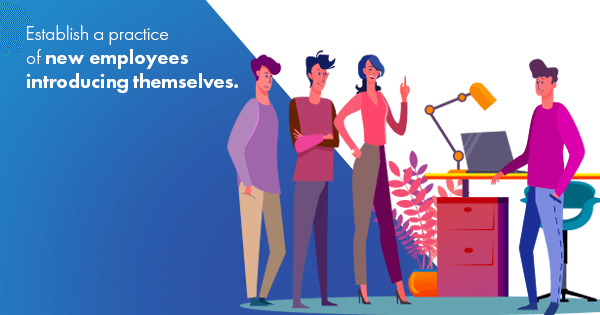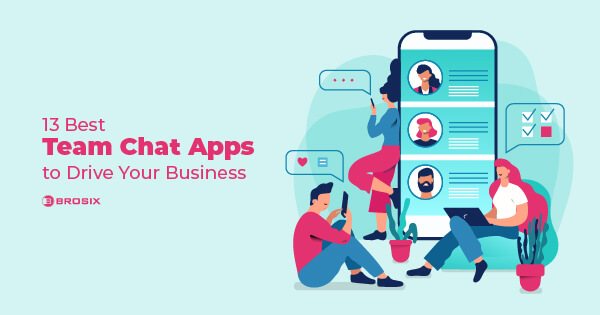The term “global village” was originally coined in the 60s as a creative way to describe how the world is becoming more and more interconnected, to the point where we have a feeling we all live two blocks from each other. The process of social, cultural, and economic globalization has never been more intense and pervasive. Naturally, it has strongly affected our workplaces, creating new opportunities, but also generating problems the world of business hasn’t experienced before.
It’s more common than ever for people of very different cultures and origins to work together. Obviously, this is a result of new technologies and the effect of introducing compulsory education in many parts of the world.
[bctt tweet=”10 Ways to Overcome the Cultural Barriers for Communication in the Workplace”]
In most cases, this kind of diversity in our workplaces has benefited companies. According to McKinsey research, companies in the top quartile for ethnic and racial diversity are 35% more likely to have financial returns above their national industry median. In addition, these companies generate 19% more innovation revenue.
Still, cultural diversification brings about certain issues that have to be handled wisely in order to get the most out of it. Let’s look into these issues in more detail and check how you can deal with them efficiently.
What are the cultural barriers to communication?
The first potential problem that usually comes to mind is the language barrier. However, most companies today won’t hire anyone who doesn’t possess the necessary language skills, and the only efficient way to overcome this sort of issue is to simply never let it happen. Nevertheless, the fact that all your employees can speak the same language doesn’t mean people will understand each other perfectly.
There are many types of cultural barriers that can produce the same effect of complete misunderstanding. People from different parts of the world traditionally have different habits and work routines, they use different body language, and they are accustomed to different approaches to communication and human relationships. Even seemingly unimportant things like culture-specific sleeping patterns and wake-up methods can affect employees’ lifestyles and work performance. All these can incite great confusion and give rise to unwanted tensions.
It’s very important to prevent or at least intelligently manage these potential disturbances. Namely, more than two-thirds of job seekers have stated that a diverse workforce is an important factor in evaluating job offers. In order to attract them, you’ll have to learn to tackle the problems we’ve mentioned.
Moreover, remember that cultural differences go beyond differences in ethnicity and places of origin. They can arise from class inequalities, generational gaps, or various personal backgrounds. Two people that belong to different generations often have the same difficulties to understand each other as two people from the opposite parts of the world. So what can you do to overcome cultural communication barriers in the workplace?
1. Be open-minded
First and foremost, you need to check your own attitude towards different cultures. You have to get to know your employees, their backgrounds and origins, and find out a bit about how they do business and how they communicate in their part of the world. For instance, “I’ll finish this soon” can mean a lot of things in different countries, and if you don’t seem to understand each other when it comes to certain phrases or ideas, don’t automatically blame it on the person’s laziness or irresponsibility.
In other words, don’t be too rigid from the very beginning. If this different interpretation of expressions or concepts doesn’t slow you down nor violates any rules, try being tolerant about it.
On the other hand, if it does go against certain procedures or disrupts the atmosphere, then you have to be open about it. Show that you’re patient and understanding, but that there’s a line that shouldn’t be crossed. Of course, you’ll have to understand these different cultures in order to pinpoint the problem and solve it together with the employee in question.
Also, don’t go over the top with showing everyone how open and tolerant you are. In other words, it’s very nice if you decided to learn some words in your employee’s language, but being too obvious about it or shouting phrases in this language across the room all the time may be a bit invasive and embarrassing for them. Sure, they might even like it, but you’ll have to be careful and check if they’re happy about it or just uncomfortable. Don’t make a show out of it if they feel awkward when you do it.
2. Efficient communication system
If you expect your employees to overcome cultural barriers in communication, first you’ll have to set them up with a reliable communication system. Without this, even the team members who come from similar backgrounds will have trouble understanding each other.
First of all, you need a single centralized communication hub. A modern user utilizes a number of different messaging apps and social networks to convey information, and this can create a lot of confusion, especially given that people from different cultures prefer different channels for this purpose. For example, users in the US or India usually choose WhatsApp, Chinese favor WeChat, while Viber is most popular in Eastern Europe.
People who already need to deal with cultural barriers in business will get even more baffled if their communication gets scattered across a dozen channels. Your employees can use these for their private conversations, but when it comes to work they should be equipped with a centralized system that will eliminate the noise and streamline the communication.
Brosix is a great solution in this respect, particularly for remote teams. You can use this single tool for all types of communication – texting, group chats, audio, video, file transfer, and even screen sharing. It’s efficient, secure, and can be a great starting point for overcoming communication barriers, both on a cultural and technical level.
3. Cultural difference awareness
Next up, you’ll need to raise awareness among your employees about the effects of diversity in the workplace and the importance of tolerance and understanding. This is truly vital as, for instance, racial and ethnic minorities make up more than 30% of the US workforce.
You can organize different kinds of training for your workers for this purpose. If possible, try to customize them as much as possible, based on the backgrounds and needs of the particular people who work at your office. If you make it too general, there’s a danger it will be boring or inapplicable, and it will seem like you did it only for the sake of protocol. This usually ends in a lot of yawns and zero lessons learned.
Therefore, try to make this training as specific as possible and talk about concrete examples that are related to concrete employees and concrete cultures they come from. Tell them about real-world situations and how they should ideally behave and communicate. You can even let your employees say a word or two about this if they wish to actively partake.
4. Let the new team members introduce themselves
A great way for your team to get to know a new person in the office is to establish a practice of new employees introducing themselves. Especially if they have a culturally different background.
Let them do it in an informal way, explaining who they are, where they come from, and what they think is important about their lives, their characters, and their origins. Don’t make them only talk about their work experience and how they’re very enthusiastic about getting an opportunity at your company. This way, your team will have a chance to actually get familiar with this person, and they may get an idea about how they should communicate with the new addition to the team. The best thing is that it will all happen in a perfectly natural and spontaneous way.
However, don’t force this if the new person feels too uncomfortable about it. Give them time to relax and show who they are, and trust your team they’ll be understanding enough not to do anything that’s out of line until then.
5. Establish clear rules, but don’t rely exclusively on them
The entire point of getting people to overcome cultural barriers is not to do it by imposing rules and restrictions. Your task is not to police around looking for perpetrators, but rather to create an environment where they’ll feel safe to express who they are without endangering anyone. They shouldn’t be respecting and listening to each other because of a bunch of regulations you wrote down, but because they understand their differences and fully accept each other in spite of them.
Still, this doesn’t mean having no rules at all. They should be your last resort, but sometimes you’ll have to invoke them. Unfortunately, if all your other efforts fail, you have to have a well-defined written code in place that will address concrete violations and measures that should be taken when they happen.
6. Team building
There’s hardly a better way for colleagues to develop understanding and get to really know each other than out-of-work activities. Getting close and familiar with another person is the quickest path to eliminating any prejudices about them.
You should be there as well, not to control them but to actually be a part of it. Broadening your understanding of other people and cultures is a never-ending process for all of you.
This doesn’t have to be anything big or intense – you don’t have to go rafting, hiking, or bowling. A simple drink or two after work will also do the trick. Let your team members casually familiarize with each other and gain a better understanding of how all the others work and communicate.
This will help them a lot when they come back to their work activities. Remember, teamwork only exists when people are able to smoothly and spontaneously understand each other and work as one organism, instead of functioning only as a scattered bunch of individuals struggling to predict each other’s intentions. For this, they’ll have to get to know each other as living human beings with dreams, fears, hobbies, and ambitions. They’ll have to overcome perceiving one another merely as job positions.
7. Seek feedback
To improve any kind of communication in any area of life or business, being genuinely open is key. Especially when it comes to cultural communication barriers in the workplace.
Simply put – talk to people. Ask your employees for open feedback if they feel threatened or misunderstood, or if they feel they can’t figure out someone’s ideas, actions, or behavior. Sometimes people will feel left out or like they just don’t understand others, and they won’t do anything about it because they feel uncomfortable talking about the issue.
This often happens when miscommunication stems from cultural barriers. It may be embarrassing for an employee to admit that to other colleagues, and that’s why it’s sometimes difficult to recognize that there’s a communication gap at all. It may seem like this person is just careless or negligent.
So try asking your employees about this in an informal way. Don’t act like they’re guilty of something, and make it clear that they won’t get anyone into trouble if they talk about this. Show that you’re there to help them and the team be happier and more efficient. These misunderstandings are often trivial, and they can be easily solved once they’re identified. It’s just important to detect them and address them timely and properly.
8. Use simpler and more accurate language
Sometimes, overcoming cultural communication barriers is about smart and careful people management and building trust between your employees and yourself. And sometimes it’s simply about being direct and using clear, straightforward, factual language.
Firstly, this means avoiding using slang that will not be understandable for some. Encourage other team members not to use slang as well, at least when it’s about business and you need to be quick and efficient.
However, using slang in a non-work environment can actually improve communication between employees in the long run. Getting used to others’ use of language and certain phrases can obviously help people understand each other. So it’s perfectly ok, even advisable, for your workers to use a bit of jargon during lunch or coffee breaks.
But when it comes to work-related issues, they should probably keep this to the minimum. Using accurate, factual language is very important, particularly in a culturally diverse workplace. Don’t say “soon, ” – say “in two hours.” Avoid using descriptive language when communicating what you expect from an employee; instead, use numbers, metrics, and dates whenever possible. This way, you leave less room for any kind of misinterpretation.
9. Utilize visual methods
Humans are highly visual creatures, which is confirmed both by studies of human evolution and studies of language. This is not a culture-specific fact, and that’s why it can be very helpful in overcoming obstacles in communication.
It’s a lot more difficult to misunderstand visual language than verbal expressions. That is, if this visual language is concrete and accurate. Graphs, charts, and diagrams are universal and easily understandable, so you should definitely use them to your advantage.
There are many ways to explain or describe a chart, but essentially only one way to represent it graphically. So, try encouraging the use of visual aids whenever possible, since it’s a great foundation for explaining complex ideas and making important business points.
10. Stay composed in unpleasant situations
It’s important to remember that even if you do everything right, you can’t control everything, and communication gaps will occasionally happen no matter how hard you try to prevent them. Cultural barriers have a lot to do with how people were raised and which ideas were imprinted on them from a very early age. A couple of conversations and a cultural awareness training session aren’t going to solve cultural misunderstandings for good.
Sometimes, the situation will even escalate out of proportion, and it may get quite uncomfortable. Naturally, you should do everything to anticipate this and react before it happens. It’s much easier to talk sense into people before any escalation, but, again, sometimes you just won’t have any control over it.
Nevertheless, if this happens, you’ll have to stay composed and help de-escalate the situation. This doesn’t mean pretending nothing has happened. That’s by far the worst thing you can do. Firstly, it’s not going to solve the obvious problem, and secondly, your employees may completely lose respect for you if they see you’re running away from important issues.
Try to solve things with conversation whenever it’s possible. Sometimes, what seems like bad blood is only a temporary communication breakdown combined with impulsive temperament. However, if it happens time after time, maybe it’s not a matter of miscommunication after all – and sometimes, just sometimes, you’ll need to question someone’s benevolence and think about whether this person belongs at your company at all.
Final thoughts
All in all, cultural diversity can help your company grow and evolve, but only if you make it a pleasant place for all people to work and interact with each other.
[bctt tweet=”10 Ways to Overcome the Cultural Barriers for Communication in the Workplace”]
The only way to fix cultural communication issues is to nurture the ideas of understanding, openness, and embracing differences in your company. This is the starting point, and you should always have it in mind when trying to bridge communication gaps.











